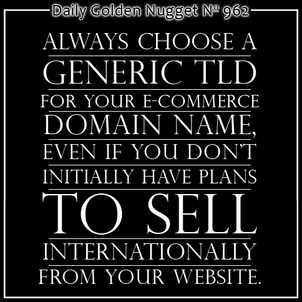 Internet trends within the jewelry industry are slowly moving towards e-commerce. It's second nature now for the everyday average consumer to search, learn, and pre-shop online long before they make the first step into a physical store.
Internet trends within the jewelry industry are slowly moving towards e-commerce. It's second nature now for the everyday average consumer to search, learn, and pre-shop online long before they make the first step into a physical store. Technologically, the jewelry industry is still lagging behind most other industries. Large jewelry chain stores have only recently figured out how to expand their in-store services into an online presence. Many e-commerce jewelry websites are springing up without the support of a brick and mortar jewelry store.
These large retailers and e-commerce site have begun to create a standard for customer internet expectations. Retail jewelers are forced to adopt these standards or they risk disappointing their audience.
When the time comes to set up your e-commerce site you need to figure out who your audience will be, and how you will portray yourself to them.
With e-commerce, you're not limited to selling to people who are within a short driving distance from your retail store. The power of e-commerce allows you to sell your products to anyone in the world, as long as you choose your domain name wisely.
The domain name you choose could make or break your e-commerce attempts. You need to stay away from any exact match domain names simply to avoid any potential for a Google penalty. You could choose your business name as your domain name, or you can choose something completely random. Before Amazon.com started selling books online no one would have associated that name to anything other than a rainforest in South America. The made- up name Zappos certainly doesn't say anything about shoes.
The point is that you don't need to have a domain name with the word "jewelry" in it; in fact, you might even want to avoid it.
Now for a little education about domain names...
The domain name google.com has two parts. Reading from left to right you would say the first part is the word "google," and the second part is the domain extension ".com."
The .com part of the domain is called the "top-level domain" or TLD for short. The First TLDs on the internet were .com, .edu, .gov, .mil, .net, and .org. Back in the beginning, businesses were only allowed to register .com domains unless they had authorization to register with one of the other TLDs.
Getting back to the google.com example, the word "google" is called the "second-level domain." The general concept of registering a domain name refers to choosing a second-level domain associated with a desired top-level domain.
But let's say you want to register the domain name engagementrings.com... First, that's an exact match domain name, and thus a bad idea. A second option could be the domain frostyourself.com, but at the time of this writing that domain was not available.
But that's okay, because these alternatives are available:
* frostyourself.co
* frostyourself.org
* frostyourself.us
* frostyourself.me
Assuming you are a business based in the USA, you might decide to register the .us version of that domain name rather than the .org or .co. Although the .me domain name looks interesting, people might read the domain as the clumsy sentence "frost yourself me," therefore I would not recommend it in this situation.
Keep in mind that we're trying to find a domain name that will work as our e-commerce portal for customers worldwide.
In addition to the standard TLDs listed above (com/edu/gov/mil/net/org), most countries have their own country code related top-level domains, referred to as ccTLD.
The .co, .us, and .me ccTLDs are officially reserved for businesses residing in Colombia, the US, and Montenegro respectively.
Because of the widespread use of .co and .me, both are reclassified within the new spectrum of "generic top-level domains," or gTLD for short.
E-commerce sites with the goal to sell around the world must choose a domain name that allows search engines to recognize them as global domain names.
Here's a list of the generic domain names that Google currently recognizes:
| Generic Top Level Domains (gTLDs) | Generic Country Code Top Level Domains (gccTLDs) |
| .aero .biz .cat .com .coop .edu .gov .info .int .jobs .mil .mobi .museum .name .net .org .pro .tel .travel | .ad .as .bz .cc .cd .co .dj .fm .io .la .me .ms .nu .sc .sr .su .tv .tk .ws |
The first column shown in that above table shows the current list of official "generic" TLDs. There are hundreds more that will soon be available. The second column shows all the ccTLDs that Google treats as generic domains rather than restricting them to search results in their associated countries.
In other words, unless the TLD is in the above table, Google will assume the website you create is specific for the country code you chose. They will therefore limit the visibility of your domain to that country.
Let look again as the potential list of domain names:
* frostyourself.co
* frostyourself.org
* frostyourself.us
* frostyourself.me
Even though the .us domain name might seem to make sense for your US based company, choosing that domain name would, in fact, limit your visibility to the US market only. In this scenario, it's better to choose the .co version of the domain name.
Let me turn my attention to my friends in the UK and Australia who use the .com.uk and .com.au ccTLDs...
You might already have a successful e-commerce website serving your country, but if you hope to tap into the US jewelry market you would need to register and build a new website using one of the gTLDs or the genericized ccTLDs.
So when it comes time to choose a domain name for your e-commerce website, don't limit yourself to a single country by inadvertently choosing a country code specific TLD.








